Vernier System - Post 3 (4th Planet)






Vernier System - Post 3 (4th Planet)
The system’s 4th plant. This planet is a super-Earth orbiting the two suns at an average distance of 3.79 AU. At 4.66 Earth masses and a radius of 1.71 Earth’s the planet is quite large and massive compared to Earth. It has a hydrocarbon rich atmosphere and an average surface temperature of 187 K or -122 °F. 3 large satellites orbit the planet. The surface show evidence of numerous large impact events.
The plant’s large moons orbit close to the planet and are capable of producing double eclipses, a phenomenon only possible in star systems with more than 1 sun.
High Resolution Pictures
Picture 1 - Large battered world.
Picture 2 - Inner-most satellite occulting the planet.
Picture 3 - Large canyon
Picture 4 - Canyon close-up
Picture 5 - Double Eclipse
Picture 6 - Lunar shadow
More Posts from Sharkspaceengine and Others
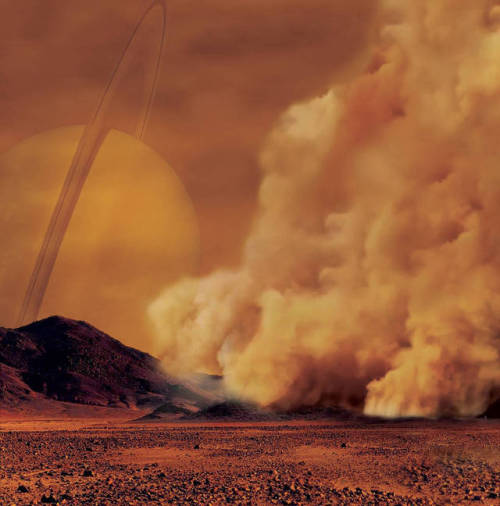
Dust Storms on Titan Spotted for the First Time
Data from NASA’s Cassini spacecraft has revealed what appear to be giant dust storms in equatorial regions of Saturn’s moon Titan. The discovery, described in a paper published on Sept. 24 in Nature Geoscience, makes Titan the third Solar System body, in addition to Earth and Mars, where dust storms have been observed.
The observation is helping scientists to better understand the fascinating and dynamic environment of Saturn’s largest moon.
“Titan is a very active moon,” said Sebastien Rodriguez, an astronomer at the Université Paris Diderot, France, and the paper’s lead author. “We already know that about its geology and exotic hydrocarbon cycle. Now we can add another analogy with Earth and Mars: the active dust cycle, in which organic dust can be raised from large dune fields around Titan’s equator.”

Titan is an intriguing world – in ways quite similar to Earth. In fact, it is the only moon in the Solar System with a substantial atmosphere and the only celestial body other than our planet where stable bodies of surface liquid are known to still exist.
There is one big difference, though: On Earth such rivers, lakes and seas are filled with water, while on Titan it is primarily methane and ethane that flows through these liquid reservoirs. In this unique cycle, the hydrocarbon molecules evaporate, condense into clouds and rain back onto the ground.

The weather on Titan varies from season to season as well, just as it does on Earth. In particular, around the equinox – the time when the Sun crosses Titan’s equator – massive clouds can form in tropical regions and cause powerful methane storms. Cassini observed such storms during several of its Titan flybys.

When Rodriguez and his team first spotted three unusual equatorial brightenings in infrared images taken by Cassini around the moon’s 2009 northern equinox, they thought they might be the same kind of methane clouds; however, an investigation revealed they were something completely different.
“From what we know about cloud formation on Titan, we can say that such methane clouds in this area and in this time of the year are not physically possible,” said Rodriguez. “The convective methane clouds that can develop in this area and during this period of time would contain huge droplets and must be at a very high altitude – much higher than the 6 miles (10 kilometers) that modeling tells us the new features are located.”
The researchers were also able to rule out that the features were actually on the surface of Titan in the form of frozen methane rain or icy lavas. Such surface spots would have a different chemical signature and would remain visible for much longer than the bright features in this study, which were visible for only 11 hours to five weeks.
In addition, modeling showed that the features must be atmospheric but still close to the surface – most likely forming a very thin layer of tiny solid organic particles. Since they were located right over the dune fields around Titan’s equator, the only remaining explanation was that the spots were actually clouds of dust raised from the dunes.

Organic dust is formed when organic molecules, formed from the interaction of sunlight with methane, grow large enough to fall to the surface. Rodriguez said that while this is the first-ever observation of a dust storm on Titan, the finding is not surprising.
“We believe that the Huygens Probe, which landed on the surface of Titan in January 2005, raised a small amount of organic dust upon arrival due to its powerful aerodynamic wake,” said Rodriguez. “But what we spotted here with Cassini is at a much larger scale. The near-surface wind speeds required to raise such an amount of dust as we see in these dust storms would have to be very strong – about five times as strong as the average wind speeds estimated by the Huygens measurements near the surface and with climate models.”

The existence of such strong winds generating massive dust storms implies that the underlying sand can be set in motion, too, and that the giant dunes covering Titan’s equatorial regions are still active and continually changing.
The winds could be transporting the dust raised from the dunes across large distances, contributing to the global cycle of organic dust on Titan and causing similar effects to those that can be observed on Earth and Mars. source

Picture of the Day 2 - January 16, 2019
A planet and it's moon burn under the glare of 4 suns.
Space Engine System ID: RS 8550-3584-5-403-110 B1.1
For everyone’s information:
The plan for the 17th, when the adult content ban comes in, is to protest.
To do that, we are making as much noise either side of the 17th as possible, and using the site as normal.
On the 17th, dead silence.
People are saying log off but what they really mean is don’t open the site or the app.
But, on the 17th make as much noise as possible on every other platform. Tweet about it and post on facebook and instagram and everywhere else.
What this does is causes a massive dip in ad revenue for one single day. That does not make staff think ‘oh everyone’s gone let’s shut down.’ What it actually makes them think is ‘oh shit people aren’t happy and if people don’t keep using our site we’re out of money and out of jobs.’
A boycott reminds a company that the users (consumers) have the power to make their site (business) worthless with one single coordinated decision.
If you want to join in, here’s what to do:
Do:
Close all open instances of the app and site on all your devices before the 17th
Make posts before and after the 17th on tumblr and other platforms, talking about why this ban is bad
Make posts on other sites during the 17th. Flood the official tumblr staff twitter and facebook with your anger and your opinion
Come back on the 18th and check in
Don’t:
Delete the app from your phone (this doesn’t affect their revenue and since it’s off the store at the moment it’ll be hard to get back)
Delete your account. I mean you can if you want to, but if you keep your account and don’t use it you’re saying to staff that there’s still time to save it. If you delete it’s hard work to come back.
Open the app or website (including specific blogs)
Make any posts (turn down/off your queue and make sure nothing is scheduled)
Go quiet elsewhere. Make it clear that this is just about tumblr, not a mass move away from all social media.
Remember: the execs don’t care about anything but money. Shutting down the site means there’s $0 further income from it. That’s their last possible course of action. If we make it clear we’re not happy, they’ll have to do something or we can do more and more until it becomes too expensive.
Protests take commitment. They’re a defiant action against a business that is doing something wrong. They will try to scare you into not participating, because they’re scared. We hold all the power here, sometimes the execs just need to be reminded of that.
Ember in the Sky

Picture of the Day 3 - November 10, 2018
Moon orbiting a young gas giant still glowing with heat from it’s formation with a distant blue sun beginning to set.

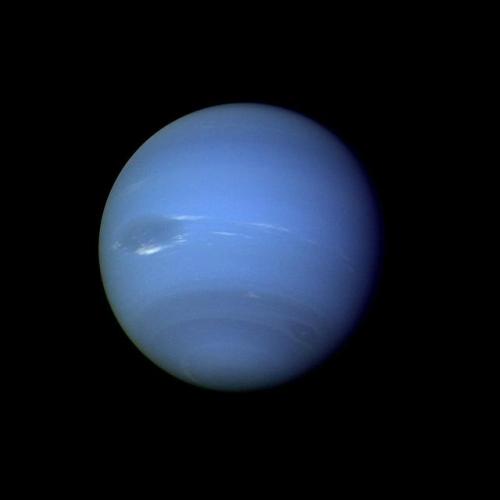
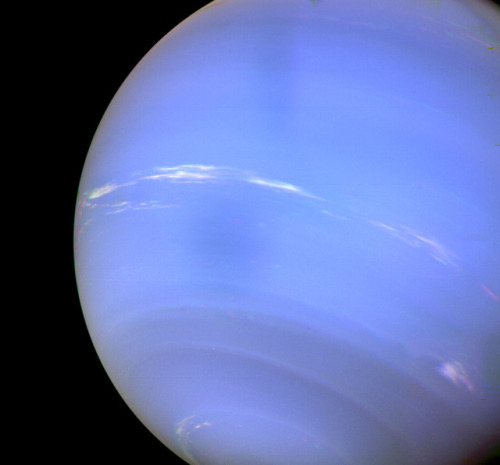
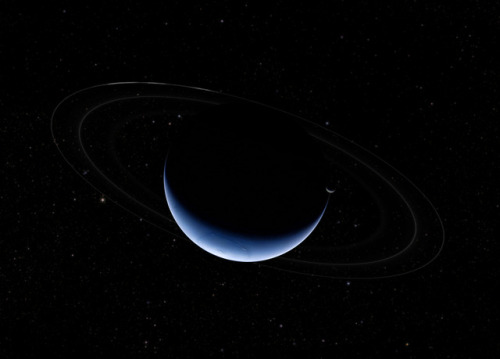
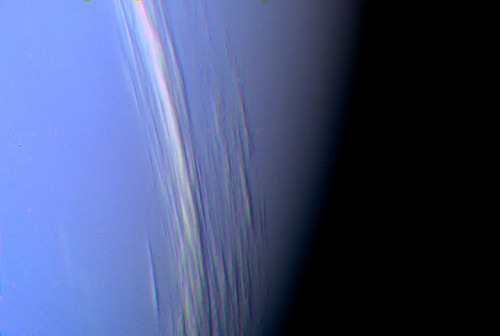
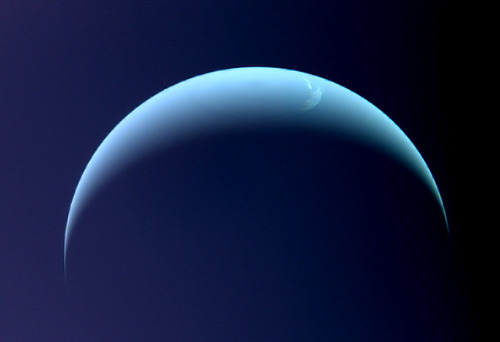
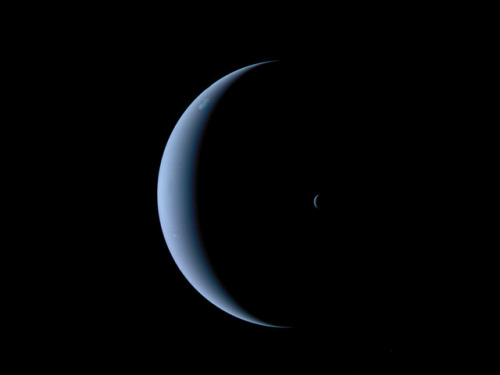
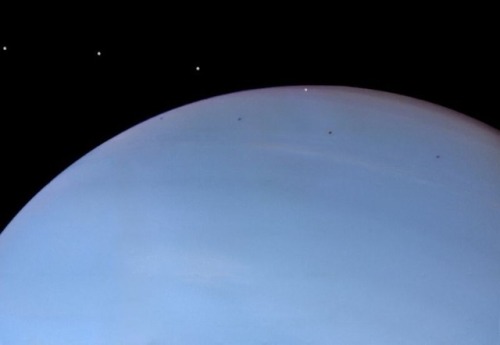
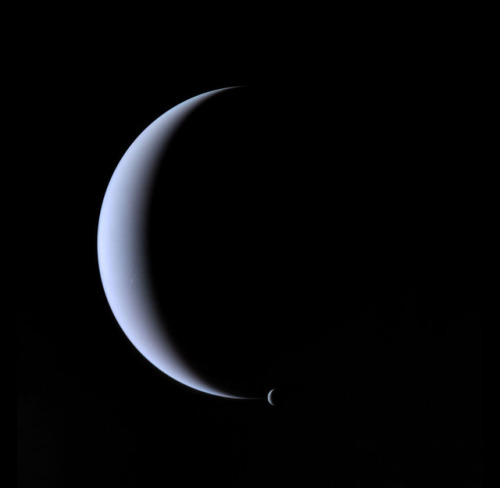
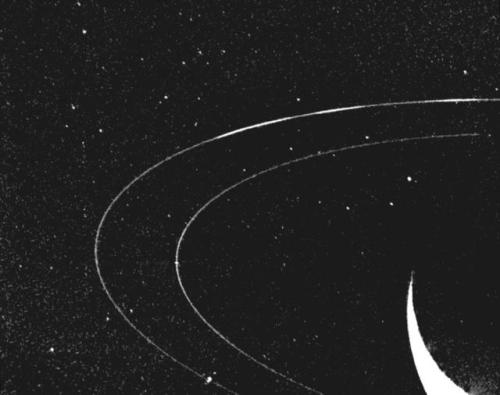
Neptune ♆
On this day in 1846 was discovered the planet Neptune.
The ice giant Neptune was the first planet located through mathematical predictions rather than through regular observations of the sky. (Galileo had recorded it as a fixed star during observations with his small telescope in 1612 and 1613.) When Uranus didn’t travel exactly as astronomers expected it to, a French mathematician, Urbain Joseph Le Verrier, proposed the position and mass of another as yet unknown planet that could cause the observed changes to Uranus’ orbit. After being ignored by French astronomers, Le Verrier sent his predictions to Johann Gottfried Galle at the Berlin Observatory, who found Neptune on his first night of searching in 1846. Seventeen days later, its largest moon, Triton, was also discovered.
Neptune is invisible to the naked eye because of its extreme distance from Earth. Interestingly, the highly eccentric orbit of the dwarf planet Pluto brings Pluto inside Neptune’s orbit for a 20-year period out of every 248 Earth years. Pluto can never crash into Neptune, though, because for every three laps Neptune takes around the Sun, Pluto makes two. This repeating pattern prevents close approaches of the two bodies.
Nearly 4.5 billion kilometers (2.8 billion miles) from the Sun, Neptune orbits the Sun once every 165 years.
Uranus’ blue-green color is also the result of atmospheric methane, but Neptune is a more vivid, brighter blue, so there must be an unknown component that causes the more intense color.
Despite its great distance and low energy input from the Sun, Neptune’s winds can be three times stronger than Jupiter’s and nine times stronger than Earth’s.
Winds on Neptune travel faster than the speed of sound.
In 1989, Voyager 2 tracked a large, oval-shaped, dark storm in Neptune’s southern hemisphere. This “Great Dark Spot” was large enough to contain the entire Earth.
Neptune has five known rings. Voyager 2’s observations confirmed that these unusual rings are not uniform but have four thick regions (clumps of dust) called arcs. The rings are thought to be relatively young and short-lived.
Neptune has 14 known moons, six of which were discovered by Voyager 2.
Triton, Neptune’s largest moon, orbits the planet in the opposite direction compared with the rest of the moons, suggesting that it may have been captured by Neptune in the distant past.
To know more about the planet Neptune click here and here.
Images credit: NASA/JPL- Caltech (some images processed by Kevin M. Gill)

TOUCHDOWN OF INSIGHT ON MARS! Man, this just never gets old. I am SO over the Moon (or Mars) each and every time our incredible civilization accomplishes such amazing technological feats. Congratulations to all who made this happen. Pop the corks!
One of the landing team members just mentioned that InSight will soon deploy instruments with which to search for water on Mars. Where there is water, there is life. It is highly unlikely that the water is sterile. I also would like to remind ourselves that life exists here in Earth where in the most inhospitable life conditions, extreme heat, extreme darkness, life exist. (At the exact time of reentry and touchdown, the street in front of my place was being blacktopped with 2 gigantic steel rollers causing the ground, foundation walls, windows to shake and vibrate. @krixomatic says, “Feels like we’re inside the lander!” I exploded with laughter. Can’t make this up.) What do you think guys? Tag someone 👥 🔽🔽🔽🔽🔽👩🚀 FOLLOW @barışözcan 👩🚀 FOLLOW @nasa 👩🚀 FOLLOW @umutayildiz . #CFP +#gaintrick #explorepage #viral #trending #ayoandteo#shmateo #piggybackchallenge #newfreezerchallenge#blocboyjb #shootchallenge #reverse #reversechallenge#toespin #dancers #waterchallenge #dancetrends#2017dancetrends #worldstar #invisibleboxchallenge#tagafriend #views #funnyvideo #freex #clicknow#neverjudgeabookbyitscover #dontjudgechallenge
#2littchallenge #ne #leftrightcha (West Virginia) https://www.instagram.com/p/BqqH3CKHdGA/?utm_source=ig_tumblr_share&igshid=15w8sydhghkjz
Stormy Giant

Picture of the Day - November 17, 2018
Large gas giant with a turbulent atmosphere and numerous cyclonic storm systems. The plant orbits a red dwarf giving the planet an orange tint.

If Mars were Terraformed (tablet) Click the image to download the correct size for your tablet in high resolution
What is a Wormhole?
Wormholes were first theorized in 1916, though that wasn’t what they were called at the time. While reviewing another physicist’s solution to the equations in Albert Einstein’s theory of general relativity, Austrian physicist Ludwig Flamm realized another solution was possible. He described a “white hole,” a theoretical time reversal of a black hole. Entrances to both black and white holes could be connected by a space-time conduit.

In 1935, Einstein and physicist Nathan Rosen used the theory of general relativity to elaborate on the idea, proposing the existence of “bridges” through space-time. These bridges connect two different points in space-time, theoretically creating a shortcut that could reduce travel time and distance. The shortcuts came to be called Einstein-Rosen bridges, or wormholes.

Certain solutions of general relativity allow for the existence of wormholes where the mouth of each is a black hole. However, a naturally occurring black hole, formed by the collapse of a dying star, does not by itself create a wormhole.
Wormholes are consistent with the general theory of relativity, but whether wormholes actually exist remains to be seen.

A wormhole could connect extremely long distances such as a billion light years or more, short distances such as a few meters, different universes, or different points in time
For a simplified notion of a wormhole, space can be visualized as a two-dimensional (2D) surface. In this case, a wormhole would appear as a hole in that surface, lead into a 3D tube (the inside surface of a cylinder), then re-emerge at another location on the 2D surface with a hole similar to the entrance. An actual wormhole would be analogous to this, but with the spatial dimensions raised by one. For example, instead of circular holes on a 2D plane, the entry and exit points could be visualized as spheres in 3D space.

Science fiction is filled with tales of traveling through wormholes. But the reality of such travel is more complicated, and not just because we’ve yet to spot one.

The first problem is size. Primordial wormholes are predicted to exist on microscopic levels, about 10–33 centimeters. However, as the universe expands, it is possible that some may have been stretched to larger sizes.
Another problem comes from stability. The predicted Einstein-Rosen wormholes would be useless for travel because they collapse quickly.

“You would need some very exotic type of matter in order to stabilize a wormhole,” said Hsu, “and it’s not clear whether such matter exists in the universe.”
But more recent research found that a wormhole containing “exotic” matter could stay open and unchanging for longer periods of time.

Exotic matter, which should not be confused with dark matter or antimatter, contains negative energy density and a large negative pressure. Such matter has only been seen in the behavior of certain vacuum states as part of quantum field theory.
If a wormhole contained sufficient exotic matter, whether naturally occurring or artificially added, it could theoretically be used as a method of sending information or travelers through space. Unfortunately, human journeys through the space tunnels may be challenging.

Wormholes may not only connect two separate regions within the universe, they could also connect two different universes. Similarly, some scientists have conjectured that if one mouth of a wormhole is moved in a specific manner, it could allow for time travel.

Although adding exotic matter to a wormhole might stabilize it to the point that human passengers could travel safely through it, there is still the possibility that the addition of “regular” matter would be sufficient to destabilize the portal.
Today’s technology is insufficient to enlarge or stabilize wormholes, even if they could be found. However, scientists continue to explore the concept as a method of space travel with the hope that technology will eventually be able to utilize them.
source
source
images: x, x, x, x, x, x, x, x, x
My Space Engine Adventures, also any space related topic or news. www.spaceengine.org to download space engine. The game is free by the way. Please feel free to ask me anything, provide suggestions on systems to visit or post any space related topic.Check out my other blog https://bunsandsharks.tumblr.com for rabbit and shark blog.
294 posts
